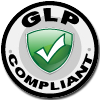Cell Culture Decontamination Service
Primary cell types and stable cell lines are costly assets that are essential research reagents. At Altogen Labs, we provide services to rescue and decontaminate (e.g., from bacteria, fungi, and yeast) cultured cells. Although it is nearly impossible to completely eliminate all contaminations, it is very important to minimize the frequency and severity of contaminations to validate ongoing research efforts.
Cell culture contamination is a result of three major contaminants; chemical contaminants, such as detergents, sera and endotoxins, microorganism contaminants such as yeast, mold, virus, mycoplasma or bacteria, and cross contamination of cell lines leading to misidentification. Once cell lines are contaminated with mycoplasma, bacteria, fungi, or yeast, cells typically lose viability or physically change in appearance (media becomes cloudy) and the culture can no longer be used in experiments. It may be costly and time-consuming to generate suitable replacements for such contaminated cells.
Mycoplasma Contamination
Mycoplasmas are self-replicating prokaryotes that lack a cell wall and are therefore unsusceptible to many antibiotics such as penicillin and beta-lactam that target cell wall synthesis. Mycoplasmas belong to the Mollicute family and are typically found in nature as parasitic bacteria of humans, insects, mammals, reptiles and plants.
According to the FDA, an estimated 11%-15% of all cell cultures are contaminated with mycoplasma. Other estimates suggest that up to 80% of cell cultures in some countries are contaminated with mycoplasma. Mycoplasma contamination is the most common cause of cell culture contamination and poses a serious problem for cell culture laboratories around the world today. The majority of mycoplasma contamination is the result of cross contamination of untested cell lines, contamination from researcher contact, or contaminated materials.
Cross Contamination
Misidentification of cell culture origins has led to the misrepresentation and loosing of years of research efforts. Although cross-contamination is not as common as microorganism contamination, it does pose a serious problem to the validity of research data. The enormous cross-contamination of cell lines with fast growing cell lines such as HeLa as led to the misidentification of cell cultures used in research and has led to misleading and misrepresented data results. Through simple detection techniques such as karyotype analysis and DNA fingerprinting scientists at Altogen Labs can identify cross-contamination of cultures and isolate the desired cells, expand the cell line and generate a contaminant free cell culture.
At Altogen Labs, we provide our clients with testing service of cell cultures to detect mycoplasma and bacterial contaminations using such techniques as PCR and RT-PCR, enzyme immunoassays, DNA probing, and staining. Decontamination and detection efforts ensure accurate study data and validate the findings of years of study efforts.
![]()
Once we know the details of your project, we can provide you an immediate price quote (contact e-mail: info@altogenlabs.com or call Altogen Labs technical support at 512-433-6177). Please note that experimental details will help us to provide an accurate quote and timeline estimate.
Get Quote for
Cell Culture Decontamination Service

